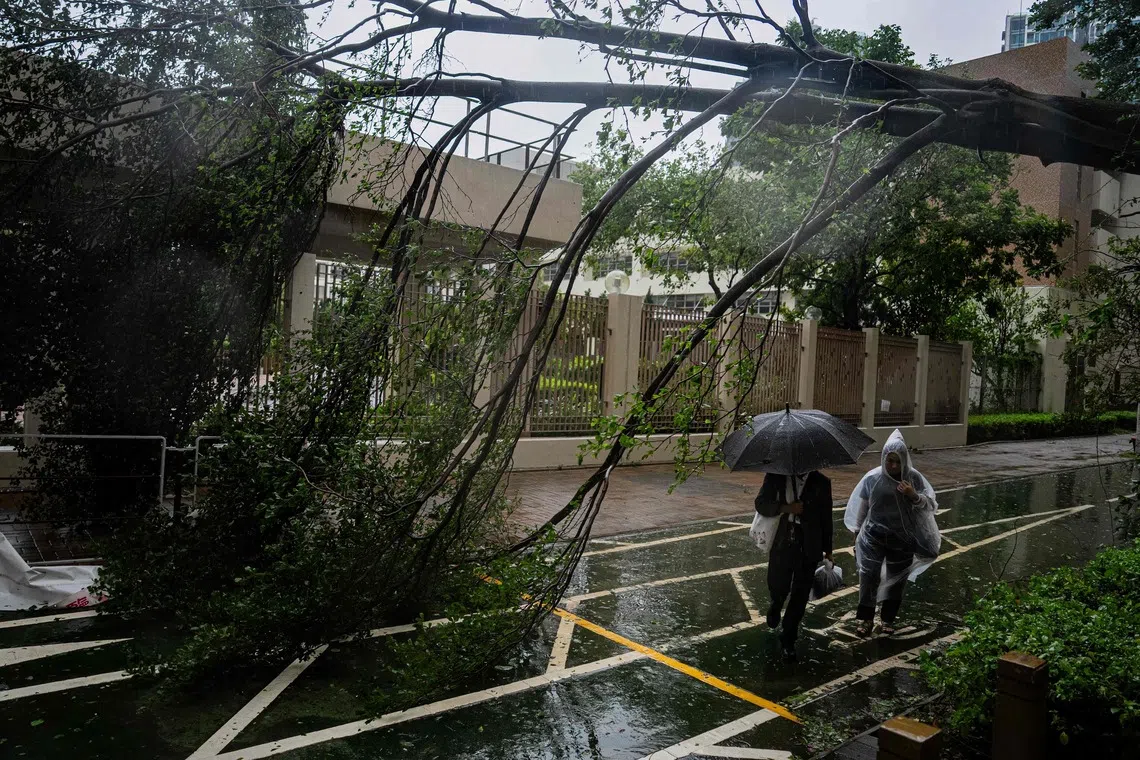Hong Kong reopens after lashing by Ragasa, world’s most powerful cyclone in 2025
Sign up now: Get ST's newsletters delivered to your inbox

People walking past a toppled tree in Tseung Kwan O after Super Typhoon Ragasa hit Hong Kong on Sept 24.
PHOTO: AFP
Follow topic:
HONG KONG – Hong Kong resumed flights out of its international airport on Sept 25 after a 36-hour suspension, reopening businesses, transportation services and some schools after the world’s most powerful tropical cyclone in 2025
Ragasa brought the densely populated city to a standstill from the afternoon of Sept 23, after sweeping through the northern Philippines and Taiwan where it killed 14 people, before making landfall on the southern Chinese city of Yangjiang on Sept 24.
More than 100 people were injured in Hong Kong, where the authorities imposed the highest typhoon signal 10 for most of Sept 24.
On Sept 25, the observatory maintained its second-lowest typhoon signal 3, keeping kindergartens and some schools shut as Ragasa moved away from the city and weakened into a tropical storm.
Huge waves crashed over areas of Hong Kong’s eastern and southern shoreline on Sept 23, with widespread flooding submerging some roads and residential properties.
Seawater surged through the Fullerton hotel on the island’s south, shattering glass doors and inundating the lobby. No injuries were reported, and the hotel said services were operating as normal.
Hong Kong’s Airport Authority said airlines would gradually resume flights from 6am on Sept 25, with all three runways operating simultaneously.
“It is anticipated that flights will be scheduled until late into late night tomorrow, handling over 1,000 flights at the normal level,” it said, adding that it expected airport operations to be busy on Sept 25 and 26.
The authorities said they were urgently repairing collapsed roads, trying to clear more than 1,000 fallen trees and respond to around 85 cases of flooding.
Prior to Ragasa’s arrival, the authorities handed out sandbags on Sept 22 for residents to bolster their homes in low-lying areas, while many people stockpiled daily necessities, leading to bare supermarket shelves and surging fresh vegetable prices. REUTERS

